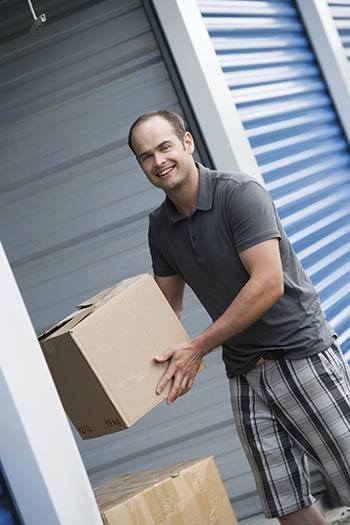Storage & Packing Tips
Your Helpful Guide to Self Storage
- Determine if you need climate control or regular storage: Regular storage is our traditional low cost advantage with drive up access to your unit to store items not sensitive to storage and temperature. Climate controlled storage is our premium product that is specially designed to store sensitive items such as books/paper, artwork/paintings, finer furniture, pharmaceuticals or anything else you want safely stored in a space without the risk of freeze/thaw or blistering temperatures.
- Determine the packing accessories you need: Paper, bubble wrap, tape, rope, drop cloths, sheets, furniture covers, pallets, skids, dehumidifiers, file boxes or storage cartons. Most of these items are also available for sale in our stores.
- Fill containers and boxes to capacity: Partially full or bulging boxes may tip or collapse. Protect your fragile goods with packing and place them near the top of your storage space.
- Label boxes: Keep a list of labeled boxes at your home or office for easy reference when you need to locate your goods.
- Pack the storage space carefully: Leave air space around the perimeter to aid ventilation. Place a pallet on the concrete floors and do not lean items up against the walls. Leave a walkway to the rear of your space for easy access. Use all the space available, including the height and place frequently used goods near the door.

Specific self storage tips for some of the most commonly stored items
- Appliances: A refrigerator or freezer should be thoroughly dry and stored with its door slightly ajar. Some goods can be stored inside large appliances. Boxes can be stacked on top of stoves, refrigerators, and freezers. Make sure that stoves and cooking equipment are cleaned before they are stored.
- Bicycles and Other Metal Items: To retard rust, wipe all metal surfaces with a rag containing a few drops of machine oil.
- Books and Documents: Pack books flat to protect their spines. Do not place boxes directly on concrete floors, but use pallets or skids to prevent moisture absorption. Use packing to fill all empty pockets in the boxes. Do not pack fragile items in the same box with books and do not overload.
- Bedding, Clothing, Curtains, Drapes and Linens: Clothing, curtains and drapes should be stored on hangers. If hanging cartons are not available, such items should be carefully folded and stored in dresser drawers or cedar chests along with bedding and linens. Some facilities sell wardrobe style cardboard cartons, which help protect your clothes. Food crumbs or stains should be removed before storage and avoid storing anything that may attract pests.
- Dishes and Glassware: Place a layer of packing inside the bottom and the top of the boxes containing glassware. All glass items should be individually wrapped: nest cups and bowls and stand plates, sauces, and platters on edge. Wrapped glasses should be placed near the top of cartons. Again, fill all pockets with packing. Label all boxes containing glassware, and do not place heavy items on boxes containing glassware.
- Furniture: Place a pallet, corrugated cardboard mat, or plastic sheet on the floor and stand sofas and mattresses on end. Disassemble beds and tables and wrap table legs in paper. If a table will not disassemble, place padding on the floor and place the table on its top with the legs pointing up. Use dresser tops for stacking cartons and dresser drawers for linens or small, delicate items. Keep upholstery off the floor. Most lightweight chairs can be stacked “seat to seat” or placed upside down on tables which cannot be disassembled. Finally, place a light cotton (e.g. a bedsheet) dust cover on your furniture. All facilities sell covers for your convenience.
- Holiday Decorations: Save the original cartons that contained delicate ornaments. Pad the ornaments with packing paper or newsprint. Wrap strings of lights around a piece of cardboard before placing in a carton lined with packing paper.
- Lamps: Wrap large lamp bases in padding, wrap smaller lamps then place them in boxes. Pack delicate lamp shades separately. Do not use newsprint to wrap lamp shades or any other goods that may be damaged by ink stains. Do not store heavy items on cartons containing lamps or lamp shades.
- Mirrors, Windows, and Screens: These items should be stored on edges, not flat.
- Records and Photographs: Records should be stored on edges to prevent warping. When moving a record player, the tone arm and turntable should be secured to prevent damage.
- Tools: Metal tools should be cleaned and wiped with a rag containing a few drops of machine oil to retard rust. Long handled tools such as rakes, shovels and hoes should be clean, lightly oiled and tied in bundles.